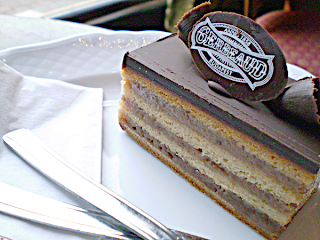This delicious Hungarian fried flat bread is the
most popular Central European street food. In the old days, the traditional lángos was baked outdoors in front of flames of the brick oven and served topped with sour cream and cheese for
breakfast. Modern cooks adopted a faster method with yeast dough fried in oil. In
Hungary, Austria and Romania lángosi are often cooked at fairs
and festivals, served with variety of toppings. In Czech Republic, Slovakia and Croatia you’ll find langoši in snack bars, and in my family - they are served as the ultimate party appetizers.
Yields about 15 medium sized pieces
500g plain flour
7g (1 tbsp) active dry yeast
250ml plain yoghurt, at room temperature
200ml milk, warm
1litre vegetable oil (sunflower or canola)
Salt
Method:
- Prep the yeast first. Warm up a big metal mixing bowl and pour in all the flour. Make a well in the centre, add yeast and mix in the warm milk. Cover with cling film and let stand at the warm place for about 10-15 minutes.
- When the yeast has foamed up, add the yoghurt and mix into a very sticky dough. Work the dough for about 5 -10 minutes with a wooden spoon and refrain from adding flour, it’s meant to be quite soft and sticky. Splash with a little oil, cover with cling film and let the dough raise overnight (or for at least 5-6 hours).
- When the dough has more than doubled in size, punch it down and make the langoši. Grease your hands with a little oil, pinch off some dough (a bit bigger in size than a golf ball), roll it in your palms and then stretch it out with your fingers. The dough will be quite elastic and easy to shape. Make it thinner in the middle and about 1 cm thick at the edges, and then place each flat piece into the hot oil. Make sure the oil is quite hot and that there is enough room for langoš to quickly drop down to the bottom of the pan and then immediately rise up to the surface, where it will puff up and remain floating.
- Fry each side for about 2 minutes, until it is golden brown and nicely crisp (it will soften as it cools down). When each langoš is fried place it on a paper towel to absorb the excess grease.
- Salt them while they are still warm, and ideally let them cool down before serving.












